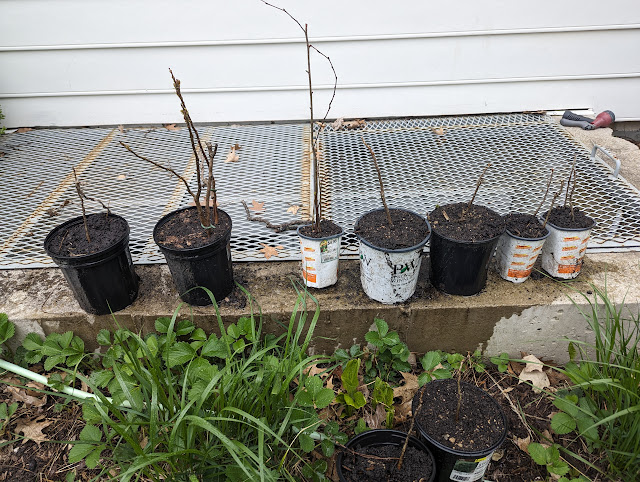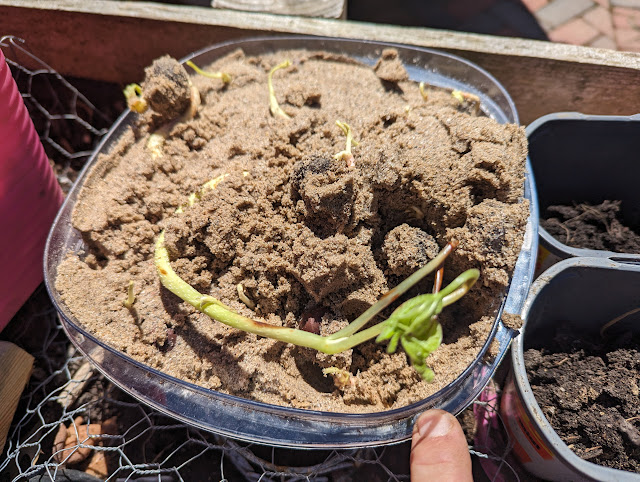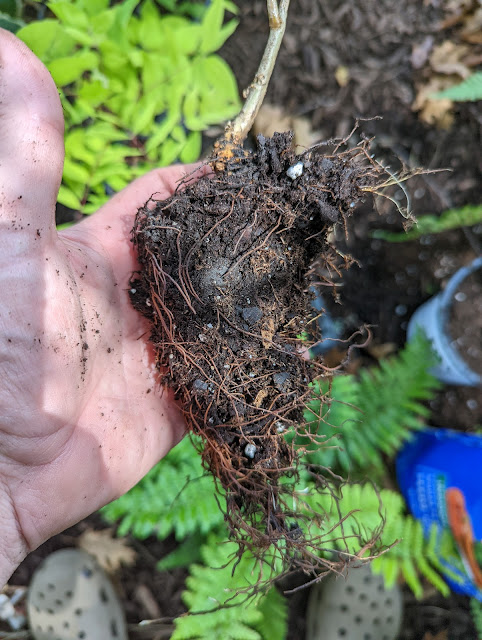Kentucky Coffee Tree Seedings And Limelight Hydrangea Cuttings Update - April 2024

A few days ago, I posted photos of the latest trees that I planted via acorns (and Chestnuts) in my annual backyard tree nursery project to grow trees from seeds. I've been at this a few years now and started with Kentucky Coffee Tree seeds in 2021 . In 2022, I cultivated some Catalpa trees from seed . And tried to root some Hydrangea cuttings . By 2023, I had a number of small seedlings of different varieties that all needed to be potted-up . And, most-recently, last Fall, I opted to go for just ONE species: Regal Prince Oak trees. And, a couple of Chinese Chestnuts . With those potted up (at least some of them), I thought it was time to dig-up the inventory and see how things are going with the existing seedlings. As I've done the past few years, I buried the nursery pots in the ground in hopes that they'd handle the cold Zone 6a/5b winter a little better in the ground. Here's how things are looking now - but most haven't leaf'd o...








